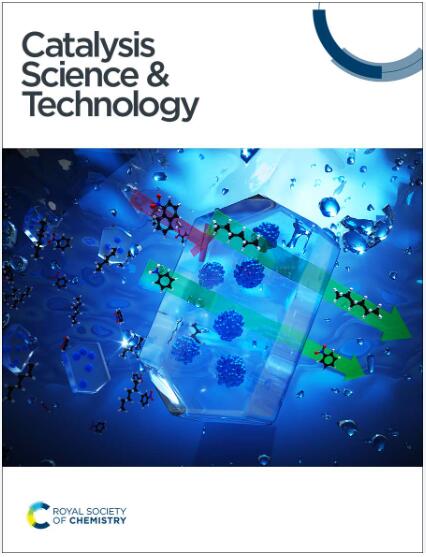Catalytic hydrodenitrogenation of primary, secondary, and tertiary C12-alkyl amines over a platinum on zirconia catalyst†
IF 4.4
3区 化学
Q2 CHEMISTRY, PHYSICAL
引用次数: 0
Abstract
In this work, the hydrodenitrogenation (HDN) of a primary amine (dodecylamine), a secondary amine (didodecylamine), and a tertiary amine (tridodecylamine) over a Pt/ZrO2 catalyst was compared in a batch reactor. The main product of the amine hydrotreating was dodecane, but significant amounts of secondary amine were also formed as an intermediate during HDN of the primary and the tertiary amine. It was found that the primary amine is the only species for which direct HDN is possible; HDN of the secondary amine thus proceeds through a primary amine intermediate and HDN of the tertiary amine involves formation of the secondary amine, which decomposes to the primary amine. Consequently, HDN of the tertiary and secondary amines is slower than that of the primary amine. Kinetic modeling indicated that bimolecular condensation reactions of the primary amine, as well as potentially of the primary amine and the secondary amine, have a significant effect on the HDN process. Formation of the secondary amine from the primary amine increases the initial conversion and nitrogen removal rate but appeared to slow down the overall rate of nitrogen removal. The results thus demonstrate how condensation reactions affect amine HDN, which has implications for catalyst design for HDN of renewable feeds containing aliphatic amines.

求助全文
约1分钟内获得全文
求助全文
来源期刊

Catalysis Science & Technology
CHEMISTRY, PHYSICAL-
CiteScore
8.70
自引率
6.00%
发文量
587
审稿时长
1.5 months
期刊介绍:
A multidisciplinary journal focusing on cutting edge research across all fundamental science and technological aspects of catalysis.
Editor-in-chief: Bert Weckhuysen
Impact factor: 5.0
Time to first decision (peer reviewed only): 31 days
 求助内容:
求助内容: 应助结果提醒方式:
应助结果提醒方式:


